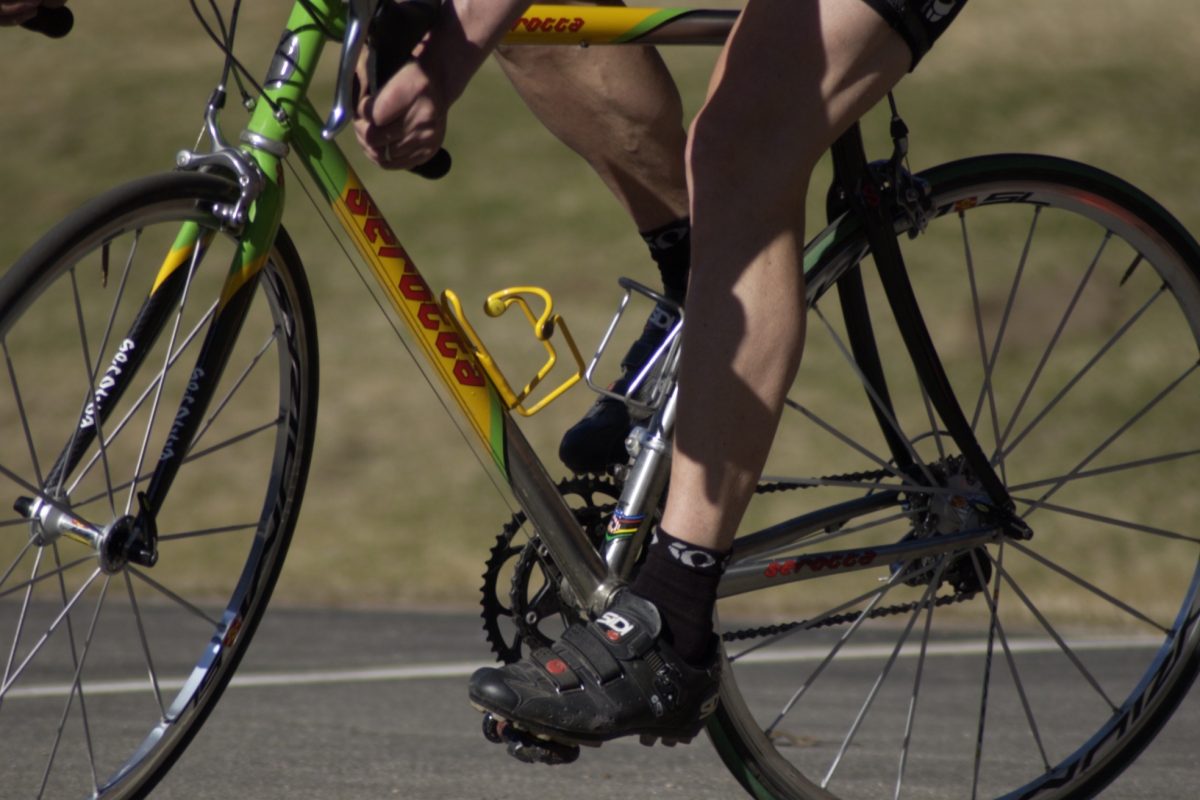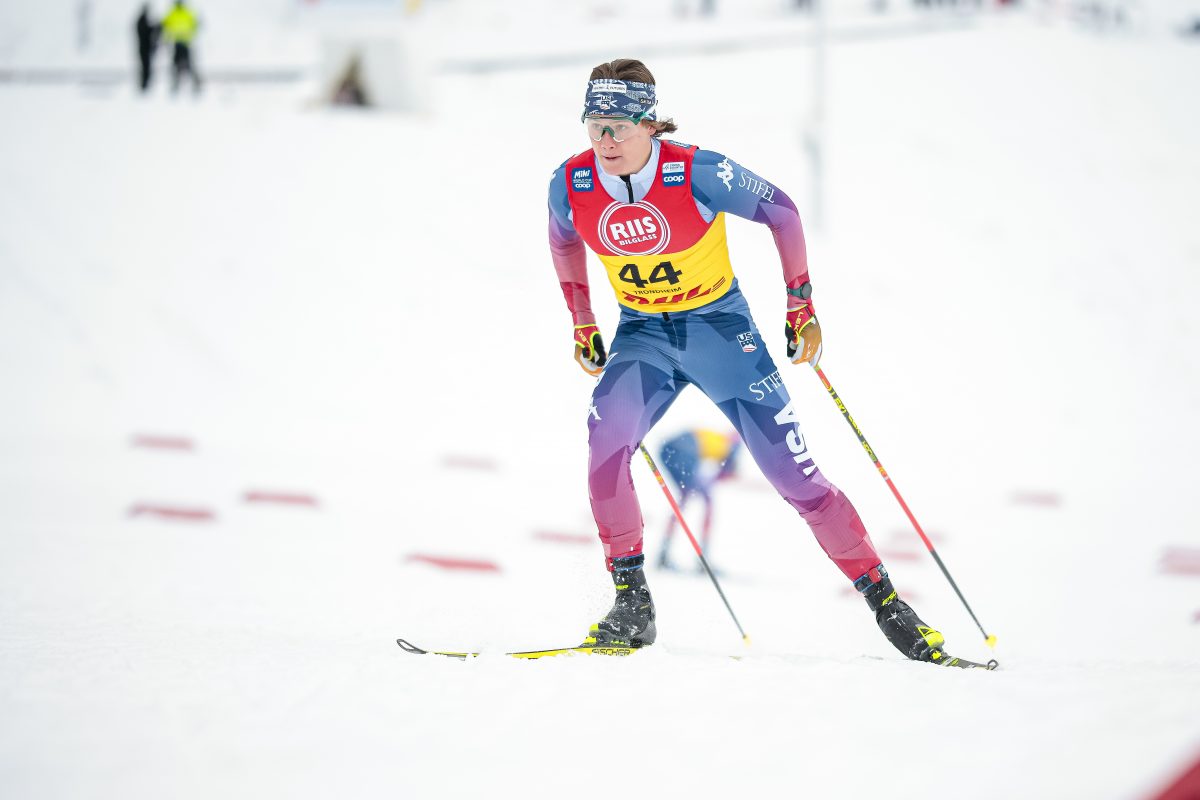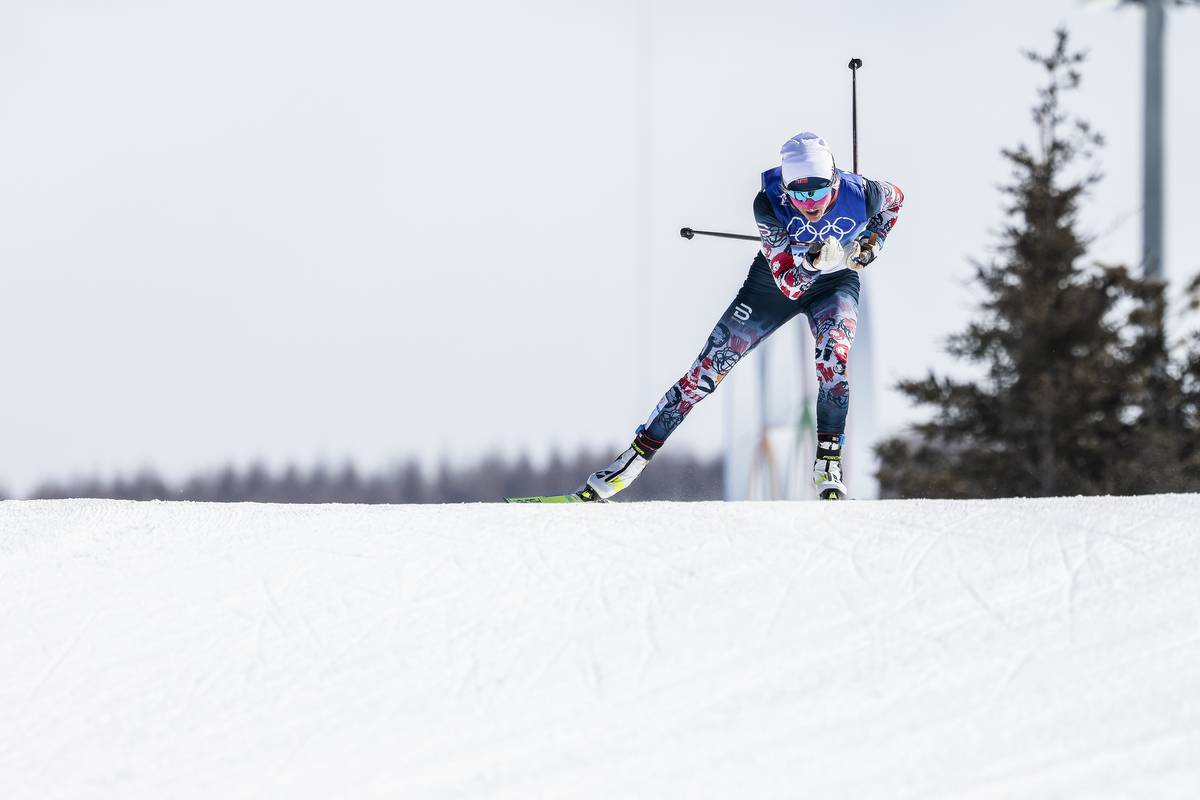Dick Taylor's original FasterSkier article can be read here:
Read Justin's Blog post responding to Dick's article:
Justin's 2004 FasterSkier article on skate technique, referenced in both Justin's blog post and Dick's respons:
Reflections on Justin Freeman's response to my article, “The Fishy Thing About Skating.â€
I'm sorry Justin Freeman has taken my article personally. I avoided using names in an honest attempt to focus on discussing content and some history of our thinking rather than on who might have said what at some particular time. I do feel an obligation to present alternate takes on topics of common concern, if there seems reason to do so on grounds of substantial research and observation, and if a theory/practice is being marketed aggressively without compelling biomechanical rationale. That hardly amounts to controversy, and I would hope we are beyond the point where expressions of doubt are pilloried as blasphemy, character assassination, or proof of being unpatriotic to the USST cause. Dissent in a democracy remains for the good of the whole. Critique is not criticism, as I say in my article, and anybody who has participated in a research project or published anything has experienced both the momentary discomfort and positive influence of peer review. Justin fills in names and claims he has been personally attacked. This was certainly not my intention.
Doubt also plays different roles with different people. Athletes cannot perform at their best with it; coaches and scholars cannot be professional without it. It keeps us sharp, searching, critical as well as respectful of our own views as well as of anyone else's. That further complicates our particular profession because we cannot share those doubts with our athletes. Their emotional environment must remain positive and stable. Doubts or the introduction of different knowledge can stimulate new growth, to be sure, but it can also destabilize that environment. The solution, however, is not for those in position or on the team to eliminate doubt ex cathedra, and in the process narrow the flow of knowledge, limit the scope of discussion, in the interests of team stature or cohesion. That asks athletes to speak as coaches and coaches to defend some competitive mantle of expertise. That produces great enthusiasm and loyalty but runs the risk of a somewhat inward, provincial frame of team mind. Power and control are consolidated, and a certain stability gained. Knowledge, of course, refuses to obey borders or chains of command. It is not a conspiracy, nor a mere shout fest, to draw from many sources of knowledge the closest approximation of reliable information for athletes.
In that regard, in saying in my article that “Athletes are flowers, coaches gardeners†I am not insulting athletes. I am a wholesale admirer, while also observing that getting from athlete to coach tends to take an inconveniently long time, primarily an evolution of mind set and study in two qualitatively different roles. We know well that many an average athlete becomes a great coach and many a great athlete an average coach. Thus my old adage: Being fast in the pasture does not make you an expert in the field. Jan Helgerud has made this same point about Norwegian athletes (in an interview in Adresseavisen reprinted in translation in xcskiworld.com).
To Justin's points. Citing his coaches and teammates as those whom I have allegedly accused of error, Justin draws on the authority of “much of the Norwegian National Team.†I am not sure of the dates when the consensus between USST and Norwegian skiers formed, but Justin, in his article from 2004, references the Norwegian Skating Project, reported in Skisport., 8, 2001. I seem to remember that Trond Nystad reported some of its findings, but to my knowledge the article was not translated or published in full in this country. A.B.Heggelund translated it for me.
The Norwegians themselves came to have doubts about their skating. At the instigation of Vegard Ulvang, who complained of a lack of a compelling concept of skating among their skiers, they undertook a new skating study project in 2000-2001. Quite in contrast to earlier Norwegian prescriptions on skating, which were in line with healthy Norwegian chauvinism and the belief “if it's skiing, we must already know everything about it,†the article made a number of observations about how they had come to think about skating, but it was distinctly tentative in its conclusions. “Pointing†of the knees was discussed, deeper bending and shallower. The idea that a gliding ski was a “braking ski†was discussed, which in turn was presented in an article in MasterSkier as a fundamental new insight, although the article did not present it as a definitive explanation. At one point, describing the push with the legs, the article states: “Then the push can start without any static glide phase. Remember, it is the push phase that gives movement forward while the gliding phase is only a 'brake-phase.'†Later it qualifies this somewhat by asserting that “Any technique must contain phases of tension and relaxation. Small micro-brakes [eccentric loading] are necessary for optimal performance over longer endurance races.†(This “braking†phenomenon has long been analyzed in running technique as a key to optimal speed and stride “flight†characteristics even by the third stride of a 100 meter sprint.) This is clearly only the beginning of an description of the complexity involved in optimal gliding. As for “static glide phase,†I have never in forty years considered that a goal. Finally, the report also shows an unsure grasp of biomechanics (work defined as the duration of force application is confused with power as the speed of force application) and was presented as study of ideas rather than a systematic model for skating.
The Norwegians continued their study, among other things by hiring Gerald Smith, the former Penn State biomechanist and co-author of Dillman's technique studies. By ironic circumstance it was Smith who took issue with Pete Vordenberg's article on poling in MasterSkier and whom Pete took to the woodshed for it, saying the skier's experience and powers of observation were more reliable than Smith's science. Both are critical, of course; two oars avoid the risk of going in circles. Smith continues to collaborate and publish with Norwegian colleagues, among other places in the European Journal of Applied Physiology, 95, 2-3, Oct. 2005. That particular article examines the relative efficiency of V2 and V1 on moderate to steeper uphills and concludes that contrary to recent trends and convictions, V1 was more efficient. It urged skiers and coaches to reconsider the “older†way. As irritating as it may be, “old†may sometimes turn out to be “new, †and new old. That is why many of us stay alert to history and scholarship (or the lack of it) and doubt with good reason. It's not always comfortable, and certainly no joy at all to disagree with a colleague's opinion, but it's what we are in fact obliged to do professionally both in the interest of the integrity of scholarly inquiry and for the good of athletes. In responding to Justin, I would hasten to add that I do not assume he is the spokesman for the USST, for it has been my feeling that a welcome spirit of openness and broader collaboration is growing in Park City.
Consistent with his scolding of stubborn old coaches in his 2004 article, Justin responds to my article by making the fatuous assumption that Marty Hall and I are recommending 1986 skating style. My stated reason for citing the 1986 skating studies directed by Charles Dillman at Penn State was that they reflected views similar to those I encountered in Stefan Lindinger's 300 page skating study of 2006, particularly with regard to (1.) the most effective polling being done parallel to the gliding ski and (2.) upper body flexion. Lindinger cites Dilman's 1986 and 1989 skating studies. Likewise, in all the German reading I have done in the last 5 years that optimal parallel poling, in the plane of the gliding ski, was best accomplished to the extent both poles worked in concert with the central muscle mass of the torso. That suggested squaring the shoulder axis to the direction of glide, i.e. at right angles, 90 degrees (as Torbjorn Karlson also has put it), in order that, among other things, the skier not have a longer and shorter pole. The Norwegian study in Skisport makes the same point: “The tendency among top-notch skiers is that the poles are more parallel today than earlier. This gives the skier a bigger chance to let the poles work in the speed direction.†My point is that if you are going to cite Norwegians as your supporting authority, you have to do more than wave their flag; you have to accurately cite related study and research, multiple sources of the similar result, as has always been required in any science.
“Old†research does indeed contain errors to be corrected by later study, but it also contains much fundamentally sound science, forgotten at too great a price to today's fine athletes. At the very least, it cannot be responsibly asserted that it “tells us nothing about skiing today,†as Justin puts it. Dillman's studies, beginning in 1975, by way of further example of how “older†research remains “present†and in the minds of serious thinkers, are also referenced by Yuri Verkhoshansky in his presentations to the Congress of the European Athletics European Athletics Coaches Association in Rome in 1996. Verkhoshansky' s work on applied training science and the nature and training of speed in particular remain the gold-standard. (The IAAF Journal, New Studies in Athletics, 2-3, 1996, in which his and other European coaches' work is presented, is a veritable bible on speed training.) I have been critical of Dillman's studies myself, but in the area of prescription, not description. Above all, the quantitative detail is impeccable. And how often it is that some fresh detail or insight catches the ear from an old article read anew for the fourth or fifth time.
I was interested that Justin noted my disavowal of the “nose, knees, toes,†according to which rotation precedes weight transfer. Honestly, I never really thought of it that way, as describing the sequence of movements, but only as the alignment of the three. Semantics, to be sure, are frequently the issue. The Europeans I read still emphasize the alignment; they just say it makes a line, or a “1.†I actually never used NKT in my own coaching. It is not mentioned in the Skisport article I have, though it might be in other Norwegian materials of which I am unaware. Perhaps that is where Justin derives his 2004 statement that the Norwegians did not totally disavow NKT but rather “used it as a starting point and went from there.†Where did they go? First he says it was standard coaching in the 80's (not to my knowledge), then he says it was proven obsolete, though not abandoned, only gone beyond, though he doesn't say what beyond was.
I also confess I have never used “hang†for either double-poling or skating and find nothing new in Justin's new “c†double-pole. He also makes a mistake when he accuses Marty Hall of not knowing physiology. He claims the transverse abdominus muscle “lies near the spine,†and is a stabilizer, as opposed to the rectus abdominus which does the crunch movement in poling. The former does not lie near the spine but rather in virtually in the same plane as rectus abdominus, only broader and to the side. It not only stabilizes but “affects the figure (by pulling the abdomen in). It also is brought into action when the abdominal pressure is increased by so-called abdominal presses.â€(Rolf Wirhed, Athletic Ability and the Anatomy of Motion, p. 72f.) Poling is the subject of another article, however.
I also emphasize relatively little rotating movement in the hips, though not “non-rotating,†and I see them squared to the direction of (each) glide as assuring weight transfer, optimal glide range and set-up for the next kick, in concert with the shoulders (harmonious optimal moment of inertia aimed in the same plane/direction). And I have instructed it simply and with perceptibly improved glide characteristics with youngsters and older folks alike. Above all, it keeps them from getting stuck between their skis. The Skisport article puts it similarly: “To say that the pelvis should be stabilized does not mean it should be in the same position through the whole cycle, but the pelvis should be turned naturally in correlation to the angle of the skis.†My goal is the same as Justin's: to keep from letting one leg/hip fall behind the other. But that is solved by the kicking obliquely (between 1 and 2 on the clock face, 10 and 11, rather than 3 and 9) forward from a pelvis squared to the glide, not by squaring the pelvis up the trail. Rotating the femur outward from the hip joint, as Justin prescribes, puts the body and leg in a wrung towel shape, knee tilted in, the ski on edge, or so it has seemed to me as I practice on my porch and then on roller skis. Pelvis squared to the ski keeps muscles work-aligned naturally and the opposing hip more forward, with the result that both feet “keep up†with the speed. Words don't do the movement justice, to be sure, and I would like someone to teach me the “up-the-trail†approach, so I can truly make comparisons.
Whatever the case, it seems to me the Norwegians cannot be drawn upon to validate the “core-faces-up-the-track†approach. Nor have Europeans, analyzing Norwegians, seen it that way, at least to my knowledge. If and when they do, I will be the first to say so, as I will be for any systematic, peer-reviewed, biomechanical research. As it stands, it is a purely USST invention, and to date it lacks compelling or comprehensive biomechanical validation.
Finally, I spend many hours, many days even, pondering research for an article, re-reading everything I have and can find numerous times, then reflecting carefully before I write, alert to “potholes†in my thinking process. I rollerski down the road several times a week, trying all the variants of technique, including the ones that do not make sense to me theoretically. I doubt myself. I check and re-check my writing, editing, re-organizing and getting a couple of other coaches to review what I have said. Quick exchanges in the blogosphere hardly provide the forum for carefully contemplating such a complex human movement as skiing. Justin's parenthesis that Dillman's skating studies were “probably done with a 386 chip†(and thus tell us nothing about skiing today) is a retreat into cute sarcasm which is not a recipe for substantive discussion.



